Finns are famously obsessed with coffee. Except for the Dutch, they drink more coffee per capita than everyone else in the world. It’s a fact they seem to be strangely proud of. So perhaps it was only a matter of time before an artist here in Helsinki started using coffee in their work. The real surprise is that the man in question is neither Finnish nor a professional artist.
Ian Bourgeot was born in London to a German-Guatemalan mother and French father. Before moving to Finland in the 1990s, he lived all over the world: from Mexico to Malaysia, Paris to Tunisia. In 2008, he set up Arkadia International Bookshop, which he runs with his Finnish wife Liisa. It is here at Arkadia that Bourgeot has his first solo show, ‘Dark Lines’ (to 5 December).
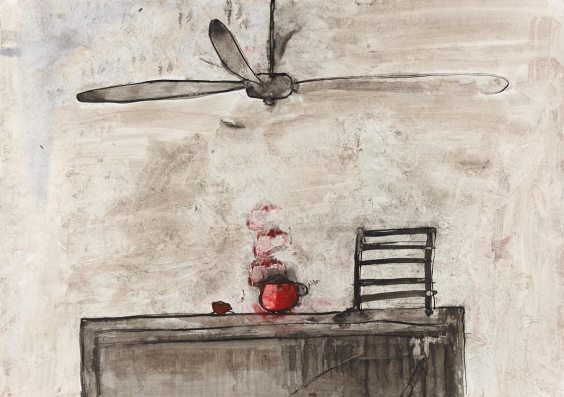
Half-forgotten room (2015), Ian Bourgeot, paper, ink, coffee
Bourgeot is a prolific artist. He paints and draws in his spare time almost every day, and, with many of the smaller works taking only minutes to produce, Bourgeot has amassed hundreds of works. Curator Anastasia Isakova has selected some 80 of these for the current exhibition. On display is a wide range of works: from small sketches to four-metre canvases and even a bronze sculpture. The paintings and drawings incorporate pencil, ink, gouache, gesso, and – uniquely, I think – coffee. ‘I used to draw sitting at cafés,’ Bourgeot explains, ‘and wasn’t in the habit of asking for a glass of water, so I ended up having to dip my brush into the espresso cup.’
The results are spell-binding. Bourgeot has an idiosyncratic style, with the same male figure occurring again and again. This man’s head is oblong, his ears often detached from his face. Clothing seems to be important. Frequently the man wears a white shirt, as Bourgeot himself does. Often he is bare-footed. Buttons and button holes are picked out with care. So too are the epaulettes of a greatcoat or a military uniform.
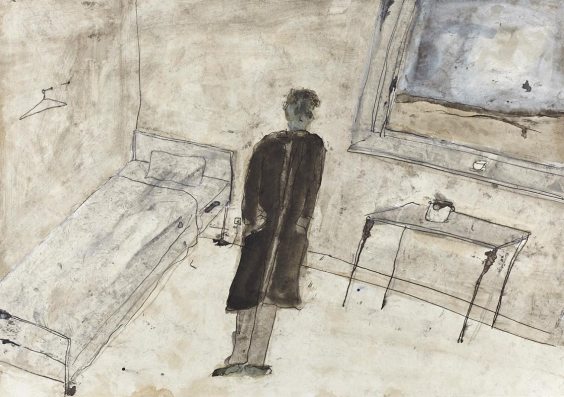
Man alone in a room (2014), Ian Bourgeot, paper, ink, coffee
Since 2005, a more overt violence has entered into Bourgeot’s work, especially in the larger canvases and works on paper: guns and blood, batons and military uniform. For me, however, the most successful works are those in which the fear of violence is sublimated into individual objects or a sense of latent narrative. In such works, interior spaces are largely empty, except for certain recurring furniture and objects: a desk, a chair, a single bed, a coffee pot. Many of the still-lifes also focus on just a single object: a kettle, a leek, a banana, a book. For the rootless man, such limited possessions are imbued with significance. A series of depictions of the man’s ancestral home reinforces the sense of somebody for whom the concept of home is fragile and contingent.
Bourgeot’s line-making ranges from the confident clarity of Egon Schiele (albeit without the grubby, uncompromising sexuality) to the fragility and uncertainty of William Utermohlen’s later works, after he had been diagnosed with Alzheimer’s. Over and across the dark lines of the exhibition’s title swirl pools and puddles of ink and coffee: predominantly browns or cloudy greys, deep-sea blues and greens. Backgrounds are periodically visible through foreground figures. Objects overlap. These are works full of doubt and power.
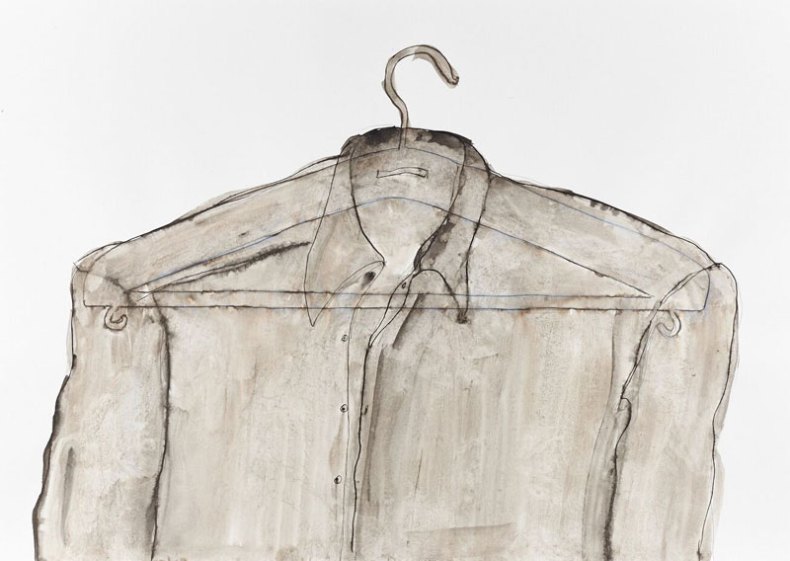
Shirt and coat hanger (2015), Ian Bourgeot, paper, ink, coffee
Arkadia is a unique place. Spread over two floors in Helsinki city centre, the shop holds events almost every day – from talks and debates to prayer meetings, recitals and experimental restaurant pop-ups. With ‘Dark Lines’, Arkadia makes its first forays as a serious gallery. Sections of the space have been rearranged so that the works are not swamped by their surroundings. Rather, they shine against white-washed walls or exposed brick. In addition, as a popular venue Arkadia possesses a vibrancy that is very rare in a contemporary art gallery. This is a home not a hub.
In a city with almost no commercial art market, opportunities for artists to exhibit their work are mostly limited to artist-run spaces charging rental fees or public museums. Even these are threatened as artists struggle to justify their work in the face of government spending cuts. The hope is that ‘Dark Lines’ will be the first of many exhibitions at Arkadia. This would certainly be a step forward for Helsinki’s art scene.
‘Dark Lines’ by Ian Bourgeot is at the Arkadia International Bookshop until 5 December.
Unlimited access from just $16 every 3 months
Subscribe to get unlimited and exclusive access to the top art stories, interviews and exhibition reviews.

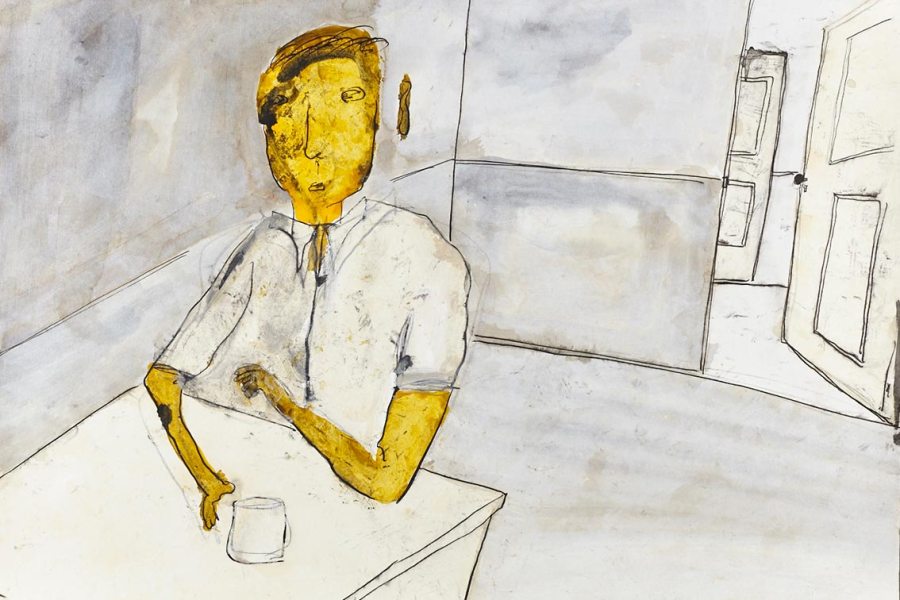
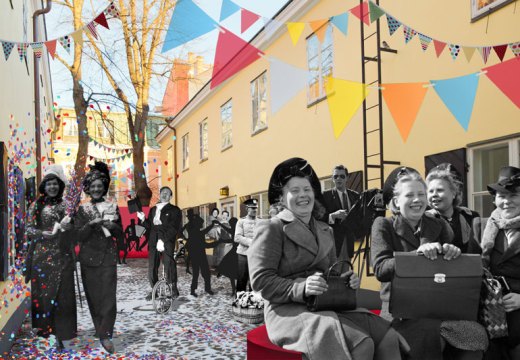
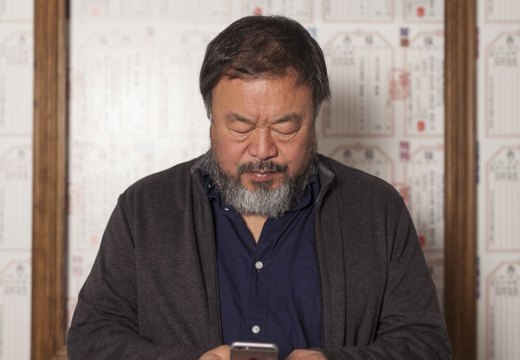
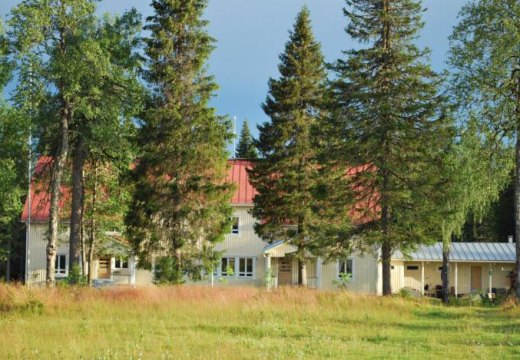









![Masterpiece [Re]discovery 2022. Photo: Ben Fisher Photography, courtesy of Masterpiece London](http://www.apollo-magazine.com/wp-content/uploads/2022/07/MPL2022_4263.jpg)
Has the Fitzwilliam got its rehang right?